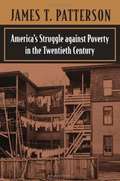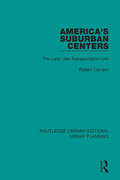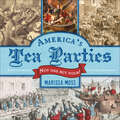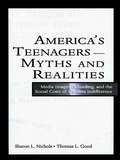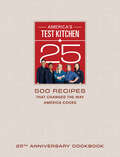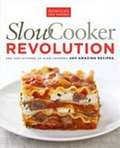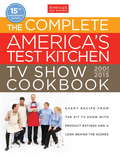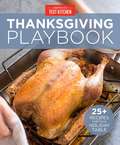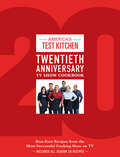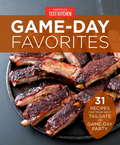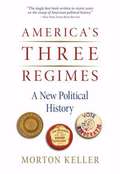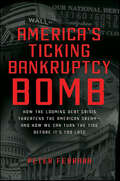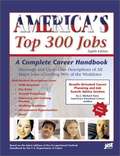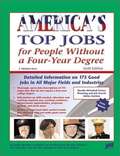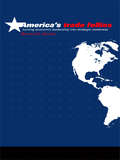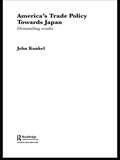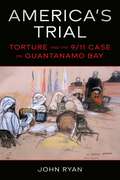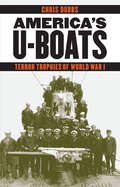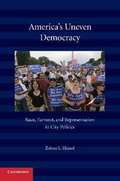- Table View
- List View
America's Struggle against Poverty in the Twentieth Century
by James T. PattersonThis new edition of Patterson's widely used book carries the story of battles over poverty and social welfare through what the author calls the "amazing 1990s," years of extraordinary performance of the economy. He explores issues arising from the economic phenomenon-increasing inequality and demands for use of an improved poverty definition.
America's Suburban Centers: The Land Use-Transportation Link (Routledge Library Editions: Urban Planning #6)
by Robert CerveroOriginally published in 1989, America’s Suburban Centers looks at how America’s suburban workplaces are being increasingly designed for automobiles rather than people. The emergence of sprawling office complexes devoid of housing, shops and other facilities is giving rise to regional congestion problems because of the ever-greater dependence on automobiles. This book argues that the low-density, single-use, and non-integrated character of America’s suburban centers is a root cause of declining levels of mobility and worsening traffic congestion.
America's Tea Parties: Not One but Four! Boston, Charleston, New York, Philadelphia
by Marissa MossThis account written for children is &“a very fine piece of historical reclamation that broadens our understanding of the road to revolution.&” (Kirkus Reviews, starred review) America&’s Tea Parties: Not One But Four! is the first nonfiction picture book to ever share that New York, Philadelphia, and Charleston each had their own tea party that took place around the same time as Boston&’s. America&’s Tea Parties provides background on the English taxation on the colonies, with emphasis on the people who stood up for their rights against the tyranny of the British as ships from the East India Company pulled into their harbors. It explains the Stamp and Tea Acts, the larger social and political issues that the colonies were having with England, why it was crucial that these tea parties happened, and the revolution that the tea demonstrations led to. This well-researched, eye-catching, entertaining, and informative volume is filled with archival illustrations and is great for primary research and as a read-aloud. It will surprise social studies classrooms, shake up US history curriculum, and delight American studies fans as New York, Boston, and Charleston finally join Boston in tea party fame. Award-winning and bestselling author Marissa Moss describes in detail the resilience and determination of the peoples of all four colonies. America&’s Tea Parties comes complete with a timeline, a bibliography, a fully searchable index, and an author&’s note that explains exactly how the author found this incredible little-told story of the tea parties that changed American history forever. &“Moss . . . delves into America&’s past, digging beneath the veneer of textbook accounts to reveal nuanced, lesser-known angles of a historical event.&” —Publisher's Weekly &“. . . The historical accounts are expertly told, and readers will be easily drawn in... A great purchase for supplementing American Revolution curriculum units.&” —School Library Journal &“A quality resource for educators and students looking for an in-depth perspective of early America&’s tea troubles.&” —School Library Connection
America's Teenagers--Myths and Realities: Media Images, Schooling, and the Social Costs of Careless Indifference
by Sharon L. Nichols Thomas L. GoodThe media's presentation suggests that American teenage culture today is the most violent, sexual, and amoral youth culture in history. In this book, Nichols and Good deconstruct the negative images held by large numbers of adults. Recognizing that many teenagers are left by adults to socialize themselves and the consequences of this "careless indifference," the authors' goal is to influence a more positive view leading to stronger social policies and better services, resources, and programs to meet the needs of America's youth. Unique features of America's Teenagers--Myths and Realities: Media Images, Schooling, and the Social Costs of Careless Indifference include:*powerful analytic lenses used to revisit typical depictions of youth;*a wealth of information brought to bear on understanding teenagers' behavior; and*consideration of a broad range of adolescent behaviors across critical socializing settings. The book begins with a discussion of the continuing myth of adolescence--how and why youth are devalued, and an overview of current beliefs about youth drawn from two 1990s Public Agenda Polls. This is followed by chapters on youth and the media, and the pressures that youth face in various dimensions of their lives. Topics include youth violence; the sex lives of teenagers; tobacco, alcohol, drugs, and teens; healthy living and decision making; working teens; and youth and education. The concluding chapter pulls together themes generated throughout the book and provides examples of policies that would underscore the value of viewing youth as a social investment. General guidelines are provided for teachers, parents, policymakers, and citizens to facilitate responding to youth in meaningful, proactive ways that improve the quality of life for teenagers and the broader society.
America's Test Kitchen 25th Anniversary Cookbook: 500 Recipes That Changed the Way America Cooks
by America's Test KitchenA landmark collection of the 500 best-of-the-best recipes from the past 25 years of the hit TV show.Join America's Test Kitchen chefs as they share the milestone recipes they turn to again and again.The perfect gift for both new and longtime fans, this beautifully packaged, fully photographed hardcover (complete with a linen-style case and placeholder ribbon) captures the revolutionary discoveries, transformative techniques, practical food science, and failproof routes to success in 500 iconic recipes from the show that has taught millions how to be better cooks.From enduring classics like Perfect Pecan Pie (season 1) that Bridget makes every year to season 25 all-star dishes like Japchae, Make-Ahead Cheese Soufflés, and Deluxe Blueberry Pancakes, the book is packed with game-changing recipes destined to become your new trademark dish—whether for a weeknight dinner, a company-worthy meal, or a holiday occasion.Get the ultimate insider info:• Cast commentaries: In 100 sidebars, cast members dish on the personal game-changers that evolved their cooking for the better• Invaluable kitchen discoveries: Read why Julia always brines salmon, Jack underbakes cookies, Dan roasts oysters, and Lisa grills her Thanksgiving turkey• Behind-the-scenes introduction: Keith shines the spotlight on the recipe testing process, Dan recalls memorable scientific demonstrations, and Lisa offers a peek into the Reviews lab—from brewing 5,000 ounces of coffee to sawing coolers in half—all in the name of empowering home cooks • Meet all 16 cast members: From the OGs like Jack, Julia, and Bridget who have been on the show since Day 1 to the newest members, people share their proudest moments, funniest memories, and top tips in a Cast Q&A
America's Test Kitchen Best Vegetable Recipes: 33 Recipes from Artichokes to Zucchini
by America'S Test KitchenThe only thing better than fresh vegetables at the height of the growing season is a collection of best of the best recipes that show you how to quickly and easily bring out their best flavor. Each recipe in this special edition digital download is preceded by a brief Why This Recipe Works paragraph that shares what we learned during the testing process. Beautiful color photos show you how the finished dish will look. Roasted Artichokes (trim and drop in lemon water to prevent oxidizing, then toss in seasoned oil), Stir-Fried Asparagus with Shiitake Mushrooms (start in a hot pan and stir only occasionally for optimum char and caramelization), Broccoli with Lemon-Oregano Dressing (nuke it so it steams from the inside out), Quick Pickles (ready after 3 hours in the fridge), Braised Hearty Greens (our simple technique cuts out the parcooking step), Grilled Caesar Salad (a favorite salad meets fire, with better than you can imagine results); and, Twice-Baked Sweet Potatoes (adding an egg to the mashed flesh gives the potatoes structure and velvety smoothness).
America's Test Kitchen Pancakes and Waffles
by America'S Test KitchenThere’s nothing like waking up to the best pancakes or waffles you’ve ever tasted. Now you can guarantee great mornings with a collection of the test kitchen’s favorite recipes for hot off the griddle (or waffle iron) beauties. Begin with your basic Buttermilk Pancakes elevated to cloud-like status with our recipe. Proceed through Lemon Ricotta Pancakes, Fluffy Cornmeal Pancakes, 100 Percent Whole-Wheat Pancakes (like none you’ve tried before), and more. We’ve included gluten-free versions, Paleo versions, and Better-Than-The-Box Pancakes. On the waffle front, make Overnight Yeasted Waffles, Gluten-Free Whole-Grain Waffles, and Classic Waffles. Set your days up right with a great breakfast.
America's Test Kitchen Slowcooker Revolution: One Test Kitchen. 30 Slow Cookers. 200 Amazing Recipes
by America'S Test KitchenThe 200 recipes in this family friendly collection deliver a revolution in slow cooking. Who says you can't have convenience and big, bold flavors! And with America's Test Kitchen, the recipes are guaranteed to work.
America's Test Kitchen TV Complete book 2015
by America'S Test KitchenThe ultimate collection of recipes from your favorite TV show This newly revised edition of The Complete America's Test Kitchen TV Show Cookbook includes all 15 seasons (including 2015) of the hit TV show in a lively collection featuring more than 950 foolproof recipes and dozens of tips and techniques.
America's Test Kitchen Thanksgiving Playbook: 25+ Recipes for Your Holiday Table
by America'S Test KitchenAmerica's Test Kitchen's one-stop shop for perfect Thanksgiving recipes.
America's Test Kitchen Twentieth Anniversary TV Show Cookbook: Best-Ever Recipes from the Most Successful Cooking Show on TV (Complete ATK TV Show Cookbook)
by America'S Test KitchenA giftable and gorgeous book featuring the very best recipes from the America's Test Kitchen TV show in celebration of its 20th anniversary and its renowned celebrity cast. More than 500 recipes from the show's 500-plus episodes are included here along with all the recipes from the 20th season--a stunning array of must-have recipes aimed at how we want to cook today.As the longest-running and most successful cooking show on public television, America's Test Kitchen has reached a remarkable milestone after 20 years on the air. This curated collection of what the editors deem to be the very best recipes from the show is not only beautiful but is also a valuable collection of foolproof recipes along with fascinating commentary from the team that brought them to life on TV. The book captures the personality of the show and provides a first-ever behind-the-scenes look at its beloved cast members along with special features that relay the collected expertise, wit, and wisdom of the team behind America's most-trusted test kitchen.
America's Test Kitchen's Better With Bacon: 20 Bacon-Loaded Recipes
by America'S Test KitchenThis collection of 20 foolproof America's Test Kitchen recipes starring bacon is perfect for bacon lovers (or even bacon likers). It features recipes from breakfast, of course, but also appetizers like Baked Jalapeno Poppers and Caramelized Onion and Bacon Tart, mains such as Bacon-Wrapped Meatloaf, Oven-Barbecued Beef Brisket, Barbecued Chicken Kabobs, and Grilled Bacon-Wrapped Scallops, as well as pasta, soups, and salads.
America's Test Kitchen's Cooking For Kids: 32 Recipes Kids Will Love
by America'S Test Kitchen<P>This is America's Test Kitchen's first-ever collection of recipes that are kid approved—recipes that our favorite junior test cooks (our own kids) want to make, eat, and make again. Most of the recipes are familiar menu items at family restaurants--Chicken fingers, Grilled Cheese Sandwiches, Thin-Crust Pizza, Classic Chicken Noodle Soup, Peanut Butter Sandwich Cookies, Chewy Brownies--but they’ve never tasted so good, and better yet, you’ll know exactly what goes into every dish. <P>Each recipe features a brief Why This Recipe Works section, because it’s never too early to start learning the hows and whys of good cooking. Whether you’ve got a kid that’s permanently paused food-wise on mac and cheese, or a budding foodie that loves to mix it up in the kitchen, this collection of recipes makes cooking together fun.
America's Test Kitchen's Game-Day Favorites
by America'S Test KitchenThe definition of a game-day party: Good times, good friends, good food. We’ve got you covered on the food front. Our editors made their picks—these are their favorite foods to eat while gathered around a TV (or celebrating outside the stadium). Start with these foolproof recipes and concentrate on the fun instead of stressing out about how the food will turn out. The only potential downside of these winning recipes? You may become the consensus pick for favorite game-day cook. Recipes include: Guacamole, Best Ground Beef Chili, Game-Day Beer Brats, Oven-Fried Chicken Wings (with three sauces: Buffalo Wing Sauce, Smoky Barbecue Wing Sauce, and Sweet and Spicy Thai Wing Sauce), New England Bar Pizza, Philly Cheesesteaks, Ham and Swiss Football Sandwiches, and Quicker Turtle Brownies.
America's Test Kitchen's Potatoes 20 Ways: Baked, Fried, Mashed, Smashed, and more
by America'S Test KitchenPotatoes are nearly universally loved, and the right recipes take a good thing and make it even better. We’ve gathered 20 of our all-time favorite potato recipes into this digital download that will come in handy anytime you think, “A potato side would be perfect, which should I choose.” There’s Best Baked Potatoes (we’ll tell you how to ensure fluffy interiors and crispy skin every time), Easier French Fries (we use half the usual amount of oil, and start the fries in cold oil); Garlic-Parmesan Mashed Potatoes (we add garlic flavor three ways), BLT Potato Salad (we add vinegar to the cooking water for deeply seasoned spuds), Scalloped Potatoes (our lighter, quicker version of the classic is weeknight-friendly); and, Patatas Bravas (ultracrispy meet a spicy tomato-based sauce).
America's Test Kitchen's Ultimate Burgers
by America'S Test KitchenEveryone loves a burger, including everyone you know who doesn’t eat meat anymore. So we collected our favorite burger recipes from decades of test kitchen work into this lean special edition digital download you can enjoy right away. Recipes include Best Old-Fashioned Burgers (drive-in burgers from the era when that mean ultracrisp, ultrabrowned, ultrabeefy burgers), Wisconsin Butter Burgers (the buns and the patties drip with buttery goodness inspired by the burgers at Solly’s Grill outside of Milwaukee, both buns and patties drip with buttery richness), Juicy Lucy Burgers (one bite gets you to a pocked of melty cheese), Juicy Grilled Turkey Burgers (flavor builders like chicken broth and soy sauce deliver flavor, and chopped mushrooms keep the texture loose), Shrimp Burgers (South Carolina’s famous burgers, held together by a surprising binder … more shrimp), and Grilled Portobello Burgers (crosshatching the tops tenderize the mushrooms while letting them absorb even more of a flavorful marinade)
America's Three Regimes: A New Political History
by Morton KellerHailed in The New York Times Book Review as "the single best book written in recent years on the sweep of American political history," this groundbreaking work divides our nation's history into three "regimes," each of which lasts many, many decades, allowing us to appreciate as never before the slow steady evolution of American politics, government, and law. The three regimes, which mark longer periods of continuity than traditional eras reflect, are Deferential and Republican, from thecolonial period to the 1820s; Party and Democratic, from the 1830s to the 1930s; and Populist and Bureaucratic, from the 1930s to the present. Praised by The Economist as "a feast to enjoy" and by Foreign Affairs as "a masterful and fresh account of U. S. politics," here is a major contribution to the history of the United States - an entirely new way to look at our past, our present, and our future - packed with provocative and original observations about American public life.
America's Ticking Bankruptcy Bomb: How the Looming Debt Crisis Threatens the American Dream—and How We Can Turn the Tide Before It's Too Late
by Peter FerraraIn America’s Ticking Bankruptcy Bomb, conservative policy expert Peter Ferrara explores the issue that will be THE hot-button topic from now until the 2012 presidential election: the looming bankruptcy of the federal government of the United States of America. Providing indisputable evidence that the American welfare state, aggressively expanded by Barack Obama and the Democrats in Congress, is on the verge of rapid and total collapse, Ferrara offers concrete proposals for reforming entitlement programs along free market lines that will shift responsibility from centralized bureaucracies to individual Americans. For every concerned citizen, America’s Ticking Bankruptcy Bomb is a must-read—a blueprint for avoiding the impending catastrophe before it’s too late.
America's Top 300 Jobs, Eighth Edition: A Complete Career Handbook
by Michael FarrThe job descriptions and other information in this book are based on extensive research by the U.S. Department of Labor. The well-written text covers all major jobs held by about 90 percent of the workforce. Each description is packed with details, including skills required, education and training needed, working conditions, salaries, advancement opportunities, future growth, related jobs, and much more. This book's content offers practical information for career planning in an easy-to-use format. You can use the table of contents to quickly identify jobs that interest you. You will find all major occupations listed there and arranged within groups of similar jobs. And the "Tomorrow's Jobs" section provides a brief, helpful overview of labor market and industry trends. The right job can make an enormous difference in your career success and satisfaction. Whether you're exploring career or educational options, looking for a new job, or advancing in your career, this book will help. Employers, career counselors, and other professionals can also use its authoritative content for determining average wages, writing job descriptions, and accomplishing other important purposes.
America's Top Jobs For People Without A Four-Year Degree: Sixth Edition
by Michael FarrAmerica's Top Jobs for People Without a Four-Year Degree describes 190 major occupations that do not require a four-year degree. Knowing more about these jobs can help you plan your training and education, make a career choice or change, or find work with higher pay and more advancement potential. Each description includes details about the following: Significant Points Nature of the Work Working Conditions Employment Training, Other Qualifications, and Advancement Job Outlook Earnings Related Occupations Sources of Additional Information
America's Trade Follies: Turning Economic Leadership Into Strategic Weakness
by Bernard K. GordonAmerica's Trade Follies controversially argues that the global political economy is hardening into regional blocs, in North America, Latin America, Europe and the Asia Pacific, organized around a powerful economic base and suspicious of each other. Bernard K. Gordon's masterful analysis shows that this division threatens American prosperity by limiting US access to the world's richest and largest markets, and endangers US security by dividing the globe along economic and political lines. Provocative, original and stimulating this book is essential reading for all those interested in American politics, trade and international political economy.
America's Trade Policy Towards Japan: Demanding Results (Routledge Advances in International Political Economy)
by John KunkelIn a few years, the United States has gone from worrying about Japan's economic might to worrying about its meltdown. The rise and fall of America's 'results-oriented' trade policy towards Japan captures this turnaround.John Kunkel traces this Japan policy to a crisis in the institutions, laws and norms of the US trade policy regime in the first half of the 1980s. This arose from the erosion of America's post-war international economic dominance (especially vis-à-vis Japan) and the unintended consequences of Reaganomics. The crisis in turn led to the progressive ascendancy of a coalition of 'hardliners' over 'free traders' after 1985.Kunkel combines research in economics, politics and history - including interviews with key policy-makers - to illuminate this important case study of American trade policy. His book offers theoretical insights and practical lessons on the forces shaping US trade policy at the start of the twenty-first century.
America's Trial: Torture and the 9/11 Case on Guantanamo Bay
by John RyanThe behind-the-scenes look at the biggest—and perhaps the strangest—case in US history: the prosecution of the five detainees accused of planning 9/11.Told with exceptional and colorful detail, America&’s Trial is the only comprehensive account of the effort to prosecute the five Guantanamo Bay detainees accused of planning the worst crime in US history—the September 11th terrorist attacks. While ignored by most media outlets, the result has been a riveting courtroom drama to determine if a democracy has the legal and moral authority to prosecute the men it previously tortured. Our government, so willing to break from norms and its own values with the CIA rendition program, has spent a maddening amount of time trying to fit the victims of illegal interrogations into a court of law. America&’s Trial captures these events from the vantage point of one of only two journalists in the world to live part-time on the base over the past ten years.In telling this story over fifty-five reporting trips, award-winning journalist John Ryan takes readers into an ecosystem that so few get to see, capturing the unique life experience of having one of the most notorious places on earth as a second home. The historic legal effort is inseparable from the surreal context and the absurdities of hosting the biggest case in US history in what is effectively a small Caribbean beach town. America&’s Trial serves as a necessary bookend to events that have defined much of the war on terror.
America's U-Boats: Terror Trophies of World War I (Studies in War, Society, and the Military)
by Chris DubbsThe submarine was one of the most revolutionary weapons of World War I, inciting both terror and fascination for militaries and civilians alike. During the war, after U-boats sank the Lusitania and began daring attacks on shipping vessels off the East Coast, the American press dubbed these weapons “Hun Devil Boats,” “Sea Thugs,” and “Baby Killers.” But at the conflict’s conclusion, the U.S. Navy acquired six U-boats to study and to serve as war souvenirs. Until their destruction under armistice terms in 1921, these six U-boats served as U.S. Navy ships, manned by American crews. The ships visited eighty American cities to promote the sale of victory bonds and to recruit sailors, allowing hundreds of thousands of Americans to see up close the weapon that had so captured the public’s imagination.In America’s U-Boats Chris Dubbs examines the legacy of submarine warfare in the American imagination. Combining nautical adventure, military history, and underwater archaeology, Dubbs shares the previously untold story of German submarines and their impact on American culture and reveals their legacy and Americans’ attitudes toward this new wonder weapon.
America's Uneven Democracy
by Zoltan L. HajnalAlthough there is a widespread belief that uneven voter turnout leads to biased outcomes in American democracy, existing empirical tests have found few effects. By offering a systematic account of how and where turnout matters in local politics, this book challenges much of what we know about turnout in America today. It demonstrates that low and uneven turnout, a factor at play in most American cities, leads to sub-optimal outcomes for racial and ethnic minorities. Low turnout results in losses in mayoral elections, less equitable racial and ethnic representation on city councils, and skewed spending policies. The importance of turnout confirms long held suspicions about the under-representation of minorities and raises normative concerns about local democracy. Fortunately, this book offers a solution. Analysis of local participation indicates that a small change to local election timing - a reform that is cost effective and relatively easy to enact- could dramatically expand local voter turnout.
